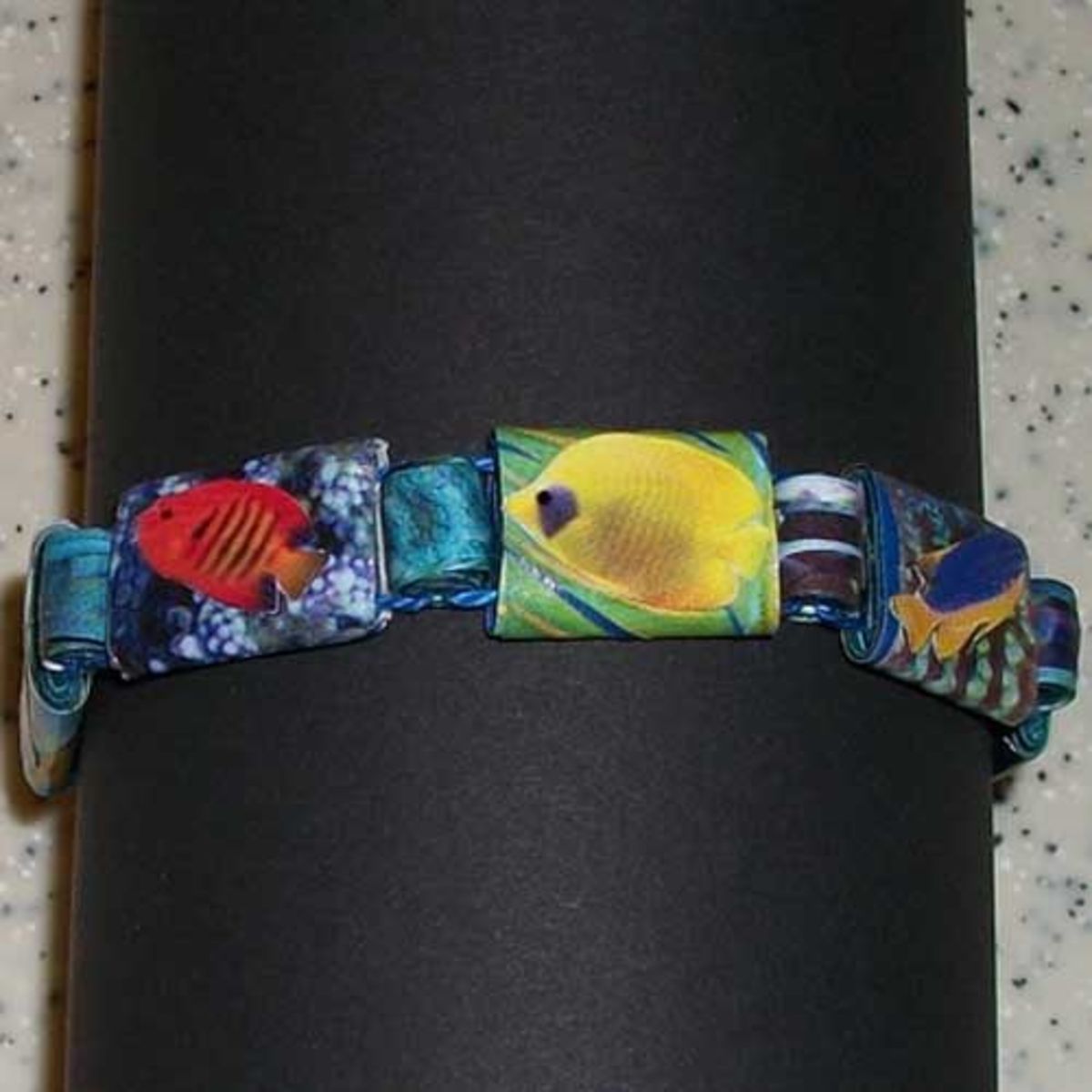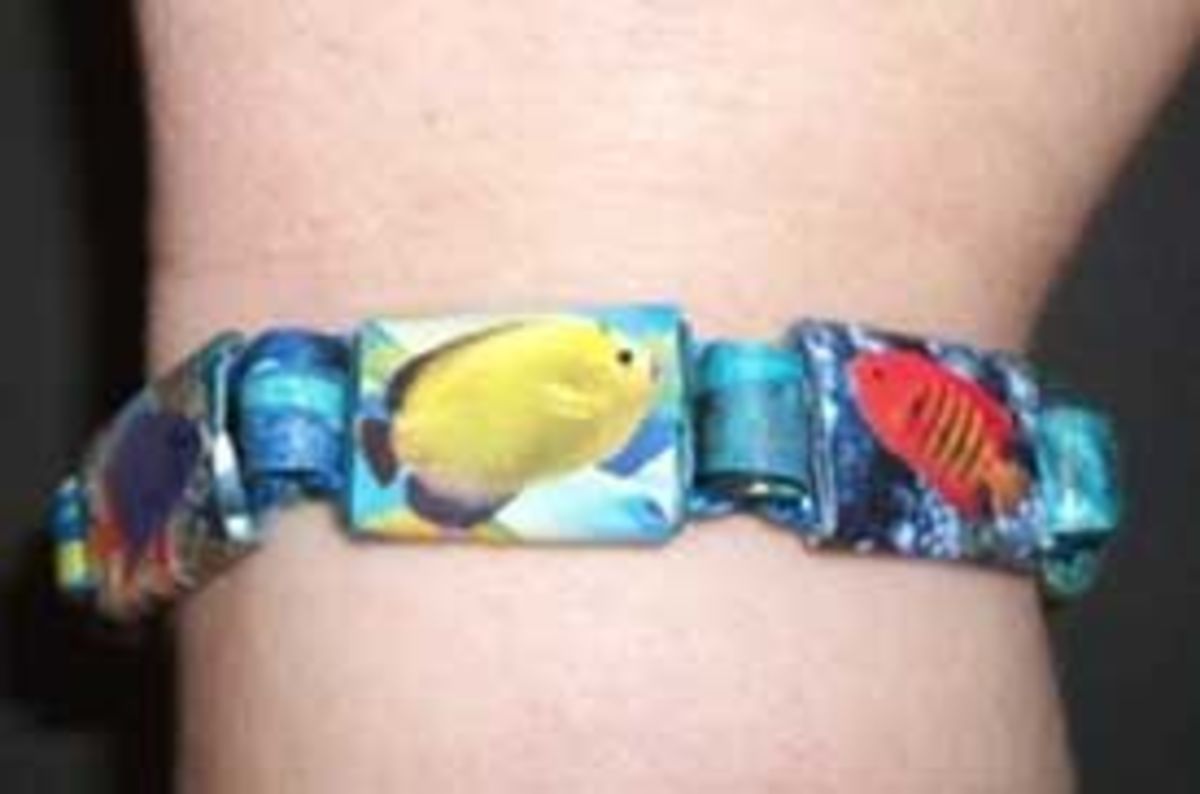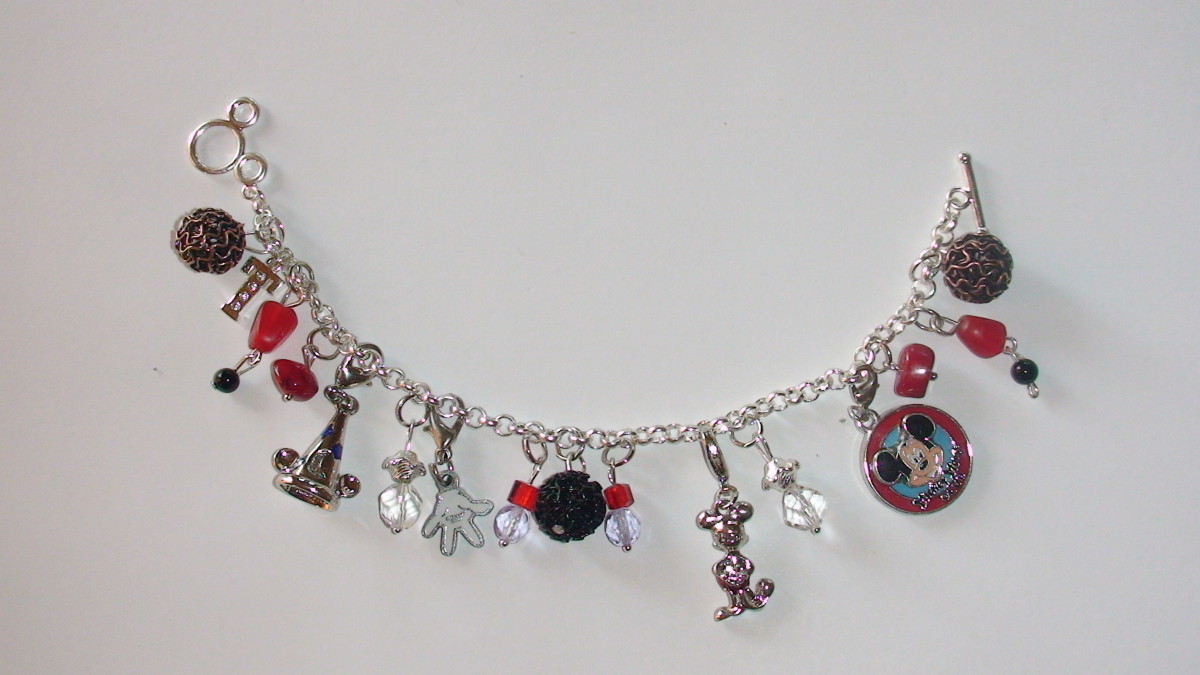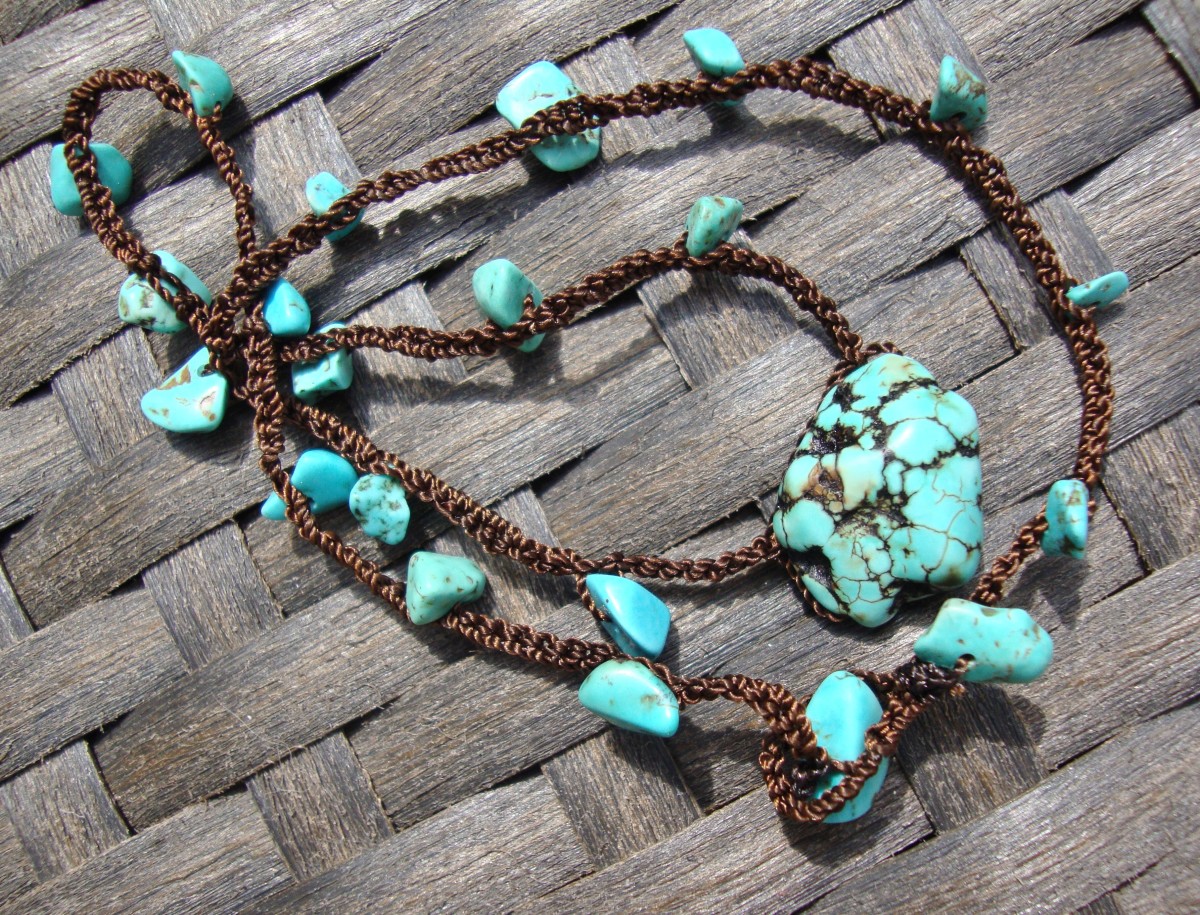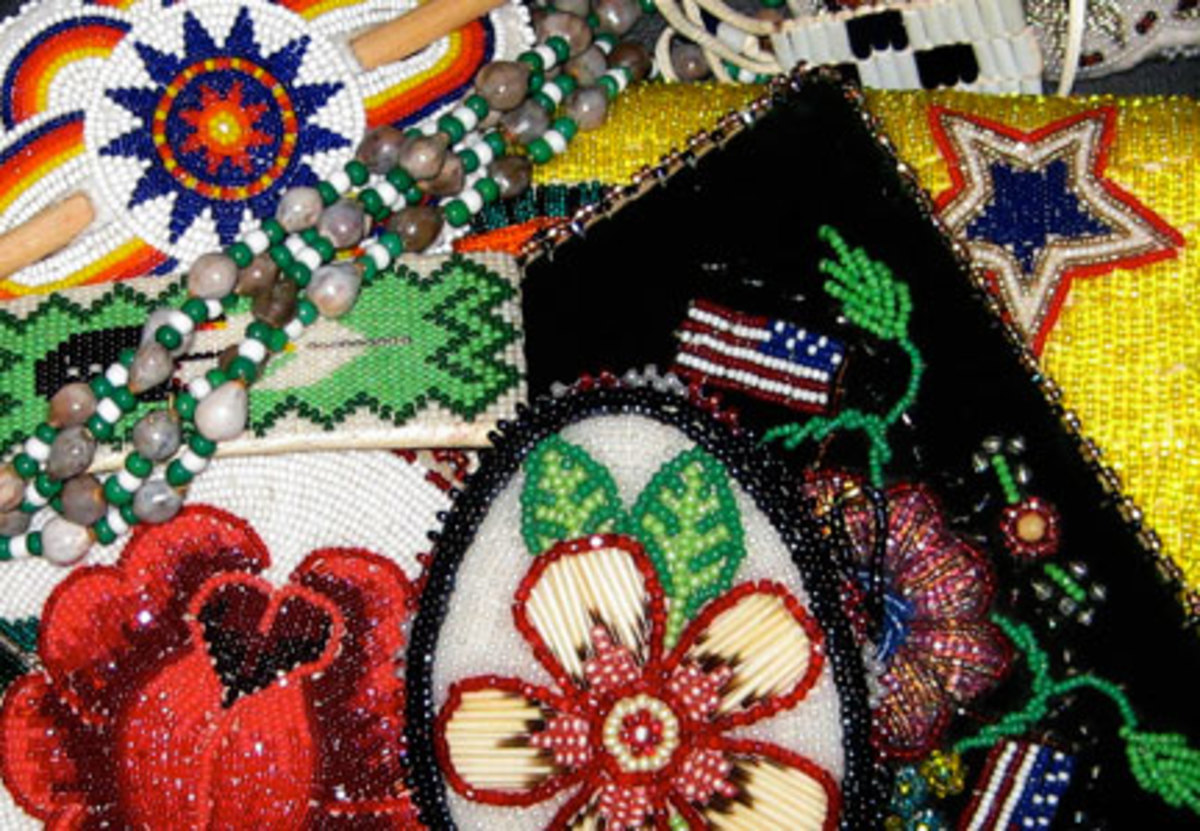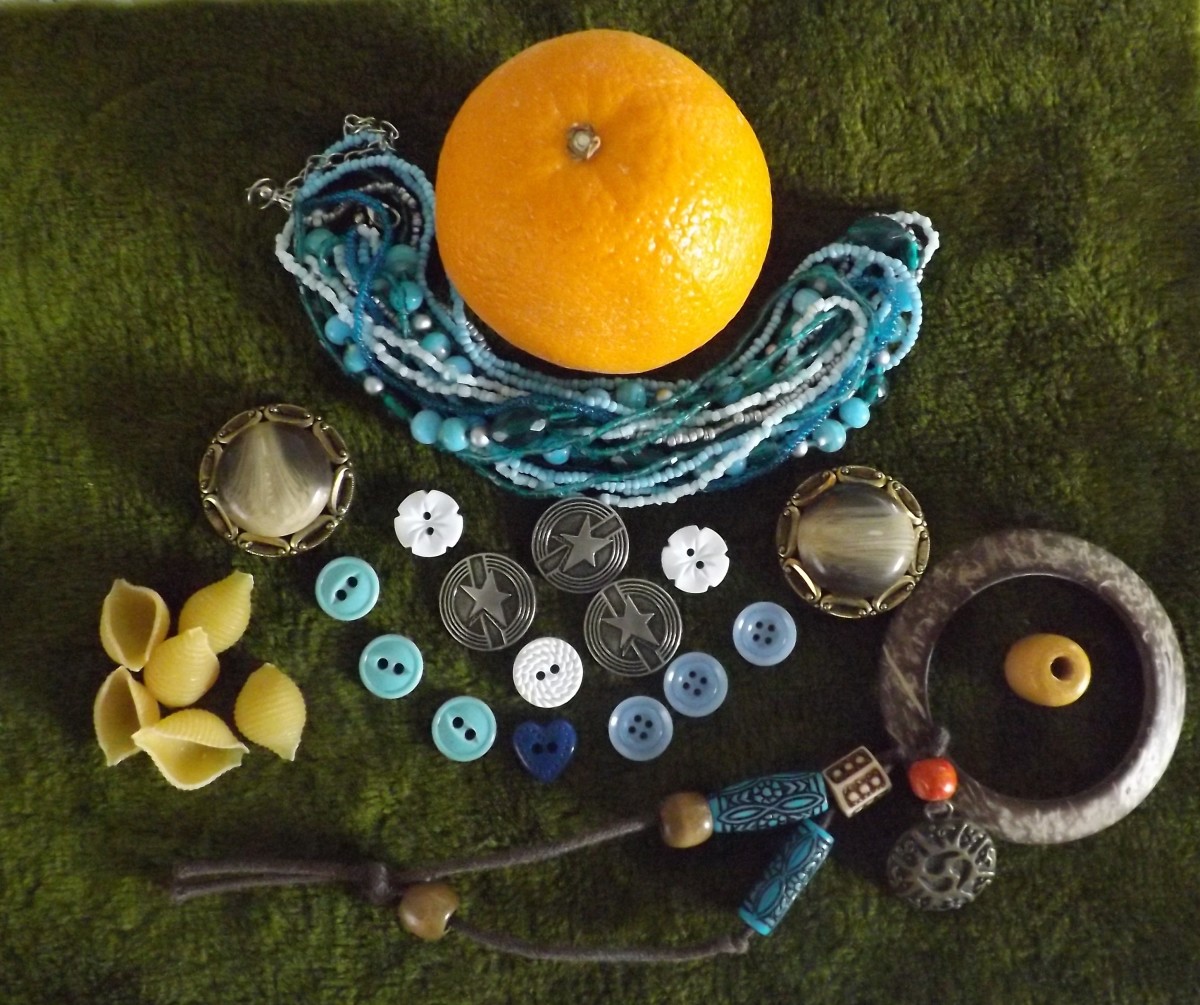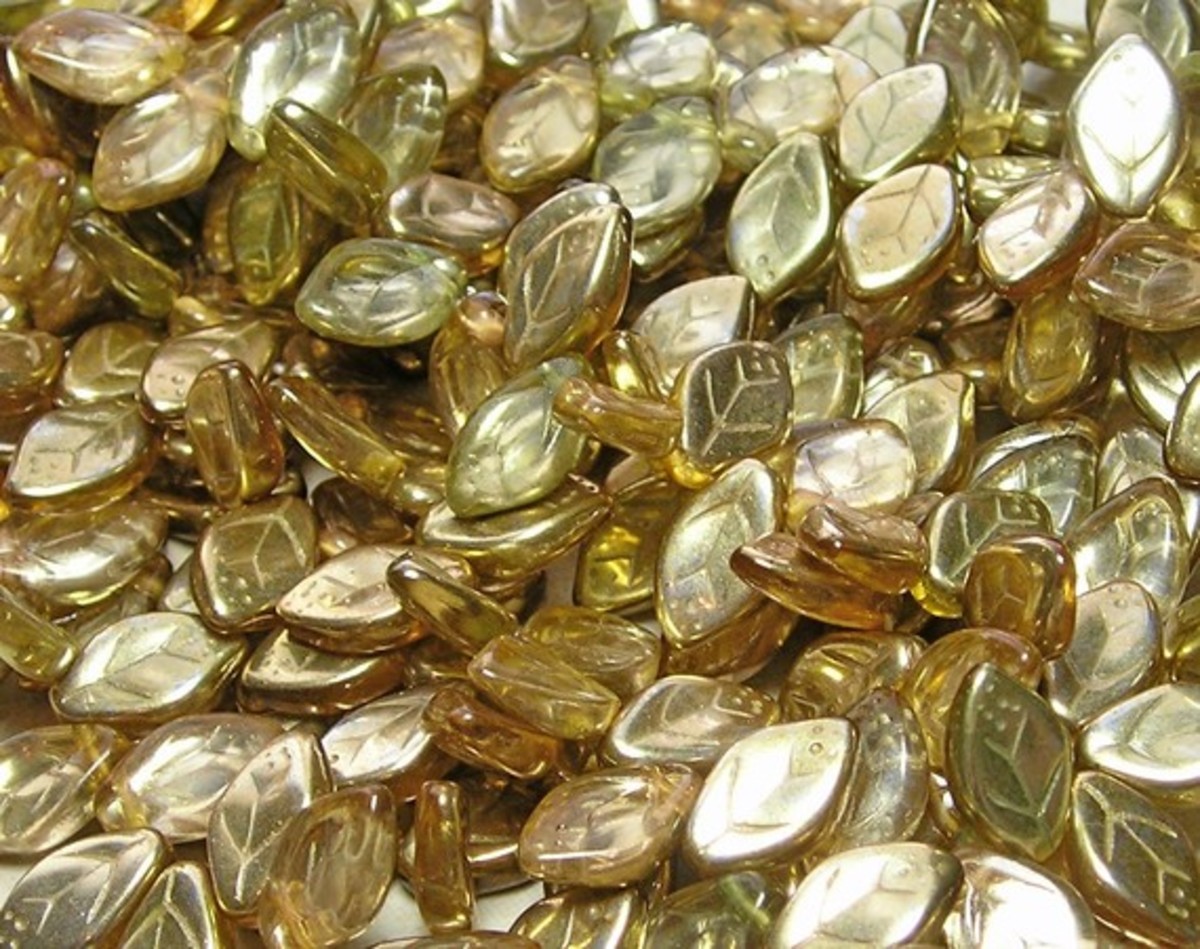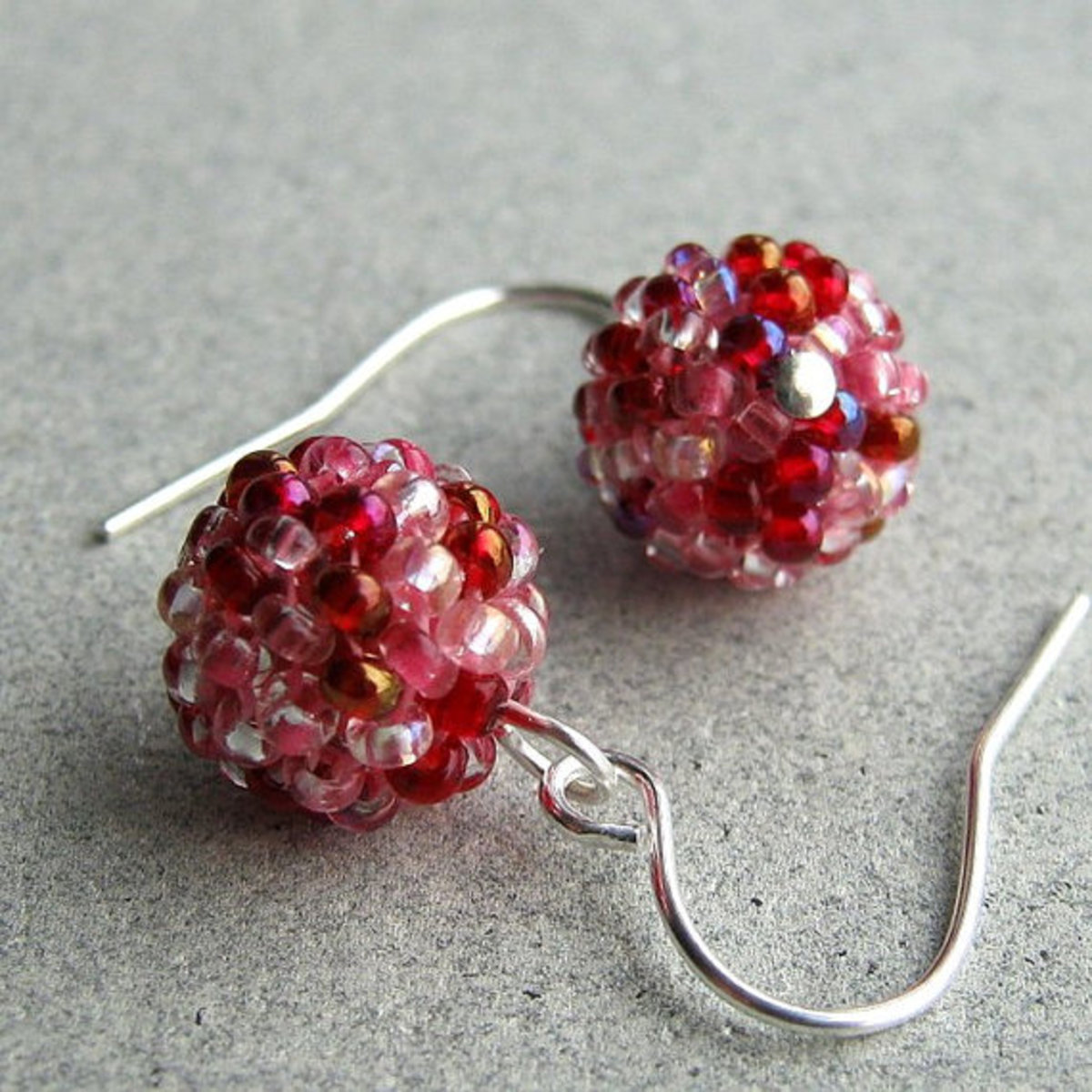Upcycled Magazine Charm Bracelet Project
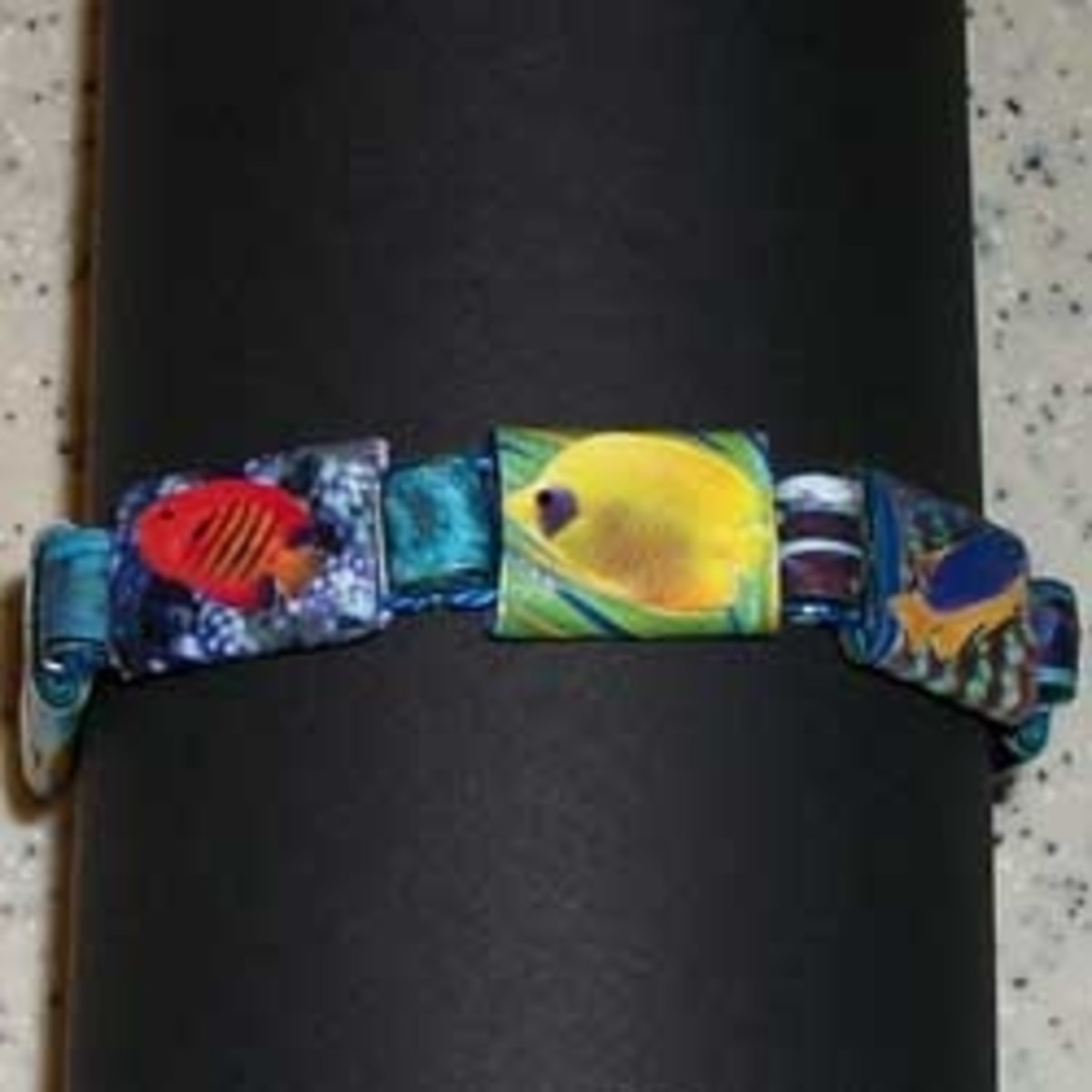
A little bit recycling, a little bit beading, and a little bit decoupage
This photo tutorial will take you step-by-step through the process of turning old magazines into an attractive charm bracelet. When you have completed this project you will have a one of a kind piece of jewelry to give as a gift or keep for yourself.
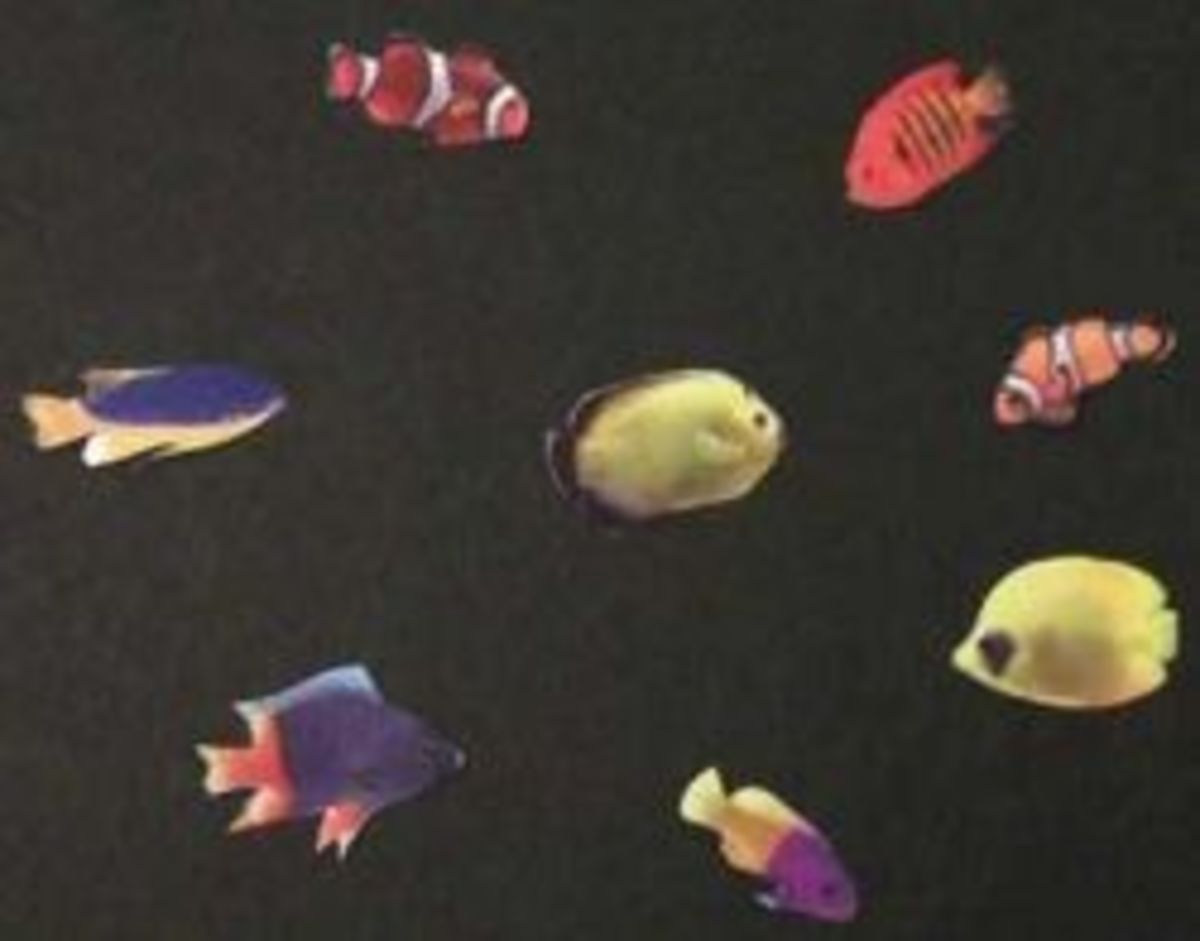
Materials
- Assorted old magazines
- Scissors
- Elmer's Glue All
- Embroidery thread in your choice of color
- Spray varnish or spray lacquer
- A needle
- A ruler
- Some kind of work surface protection such as plastic, old newspapers, or even magazine pages
I suggest you choose old magazines on topics you or the recipient of your magazine charm bracelet enjoy. It will help you to find appropriate little images for the charms.
I've actually noticed that the best place for tiny images to use on the charms is usually the ad section found in the back of most magazines.
Search through your old magazines for tiny, charm-sized images you like. They must be no larger than three quarters of an inch by one half inch.
The images preferably should be wider rather than taller. Cut the photos out very carefully. You will need seven of the charm-sized images.
I recommend cutting out these tiny images first because it takes the most concentration while cutting.
I chose to use wee little fish from my old aquarium magazines because I love saltwater fish, as does the person I had in mind when I made it. I also had the magazines around.
Protect your work area by laying down some kind of barrier such as plastic, newspaper, or old magazine pages you don't mind destroying for both the gluing and the lacquering stages.
Making the Magazine Beads
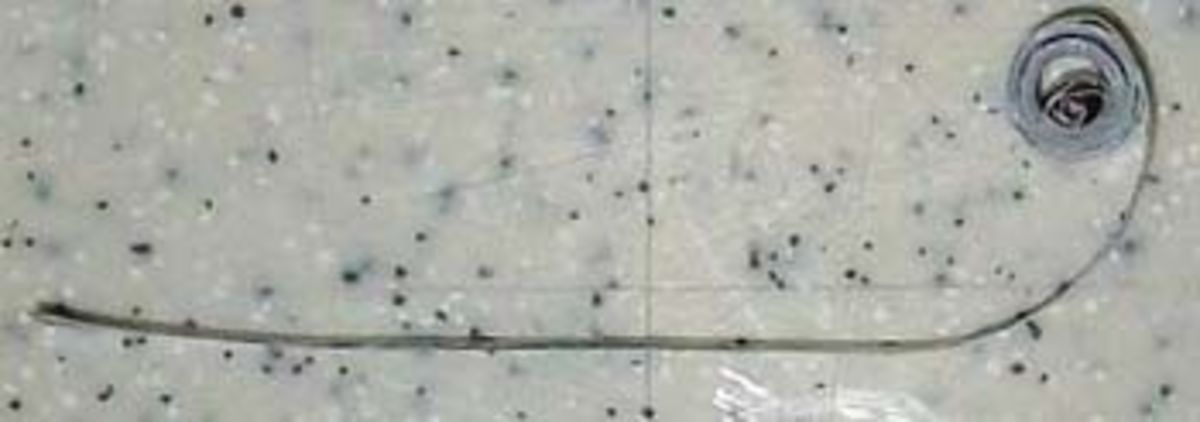
Make Bases for the Plain Beads
Cut seven strips .25 inches across also from the thickest, glossiest magazine pages, running the whole length of the magazine page. Don't worry about the color or printing. These will be used to form the bases of the beads and will later be covered with the paper of your choosing. They provide some size and bulk to the finished beads.
Apply glue lightly to one of the one quarter inch wide strips.
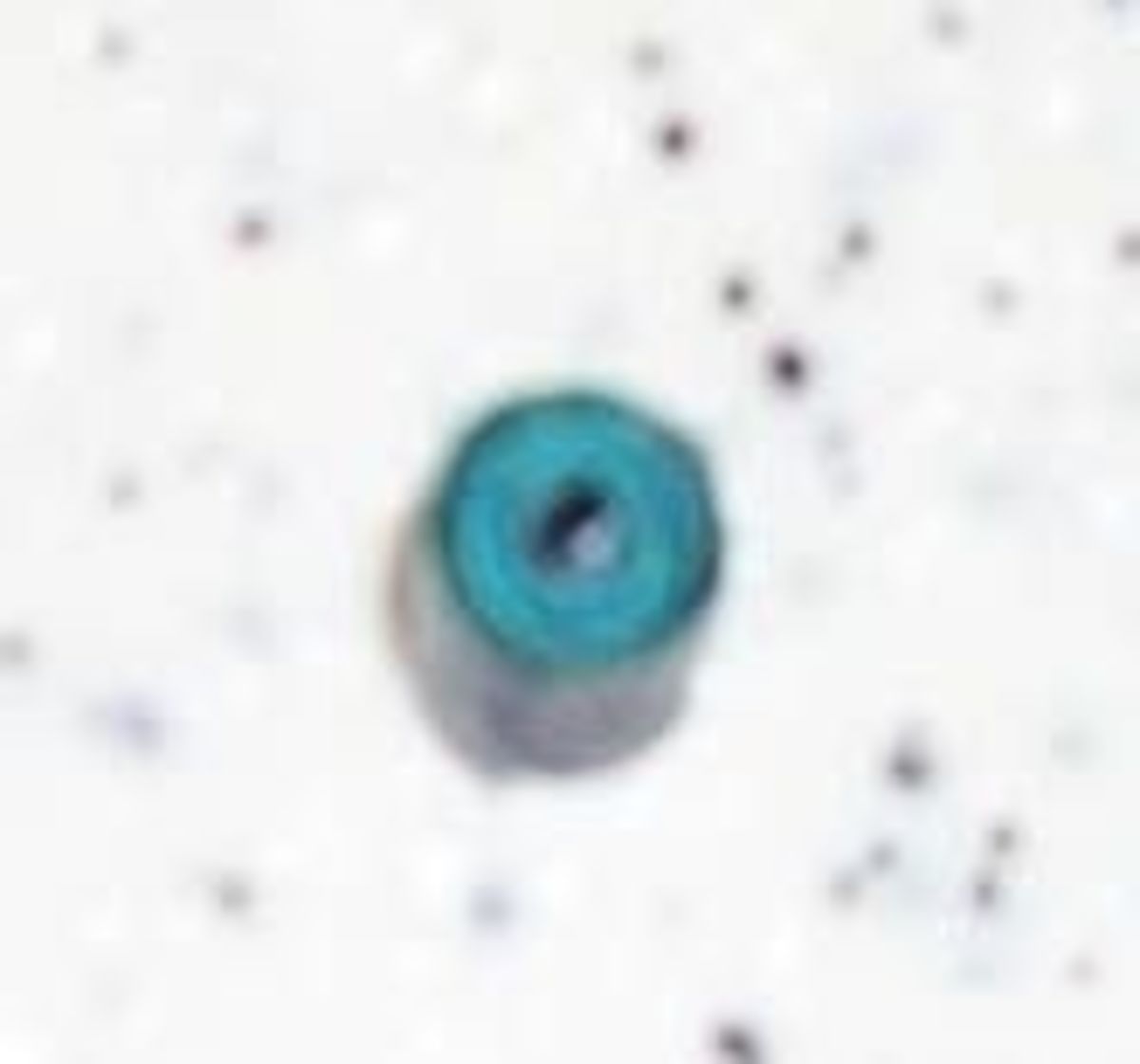
Roll the paper up in a curl as shown, only tighter so the whole thing rolls up like a roll of toilet paper. Repeat this with the other six one eighth inch wide strips and set them aside.

Cut wedges of paper from the old magazine with interesting patterns or colors one quarter inch wide and tapering to a point at about three inches. This will create interesting patterns and textures in the finished bead. This step determines the color of the finished beads. You will need seven of these wedges.
Apply a thin layer of glue to the back side of the wedges of attractive paper.
Wrap the paper wedge around the bead as shown.
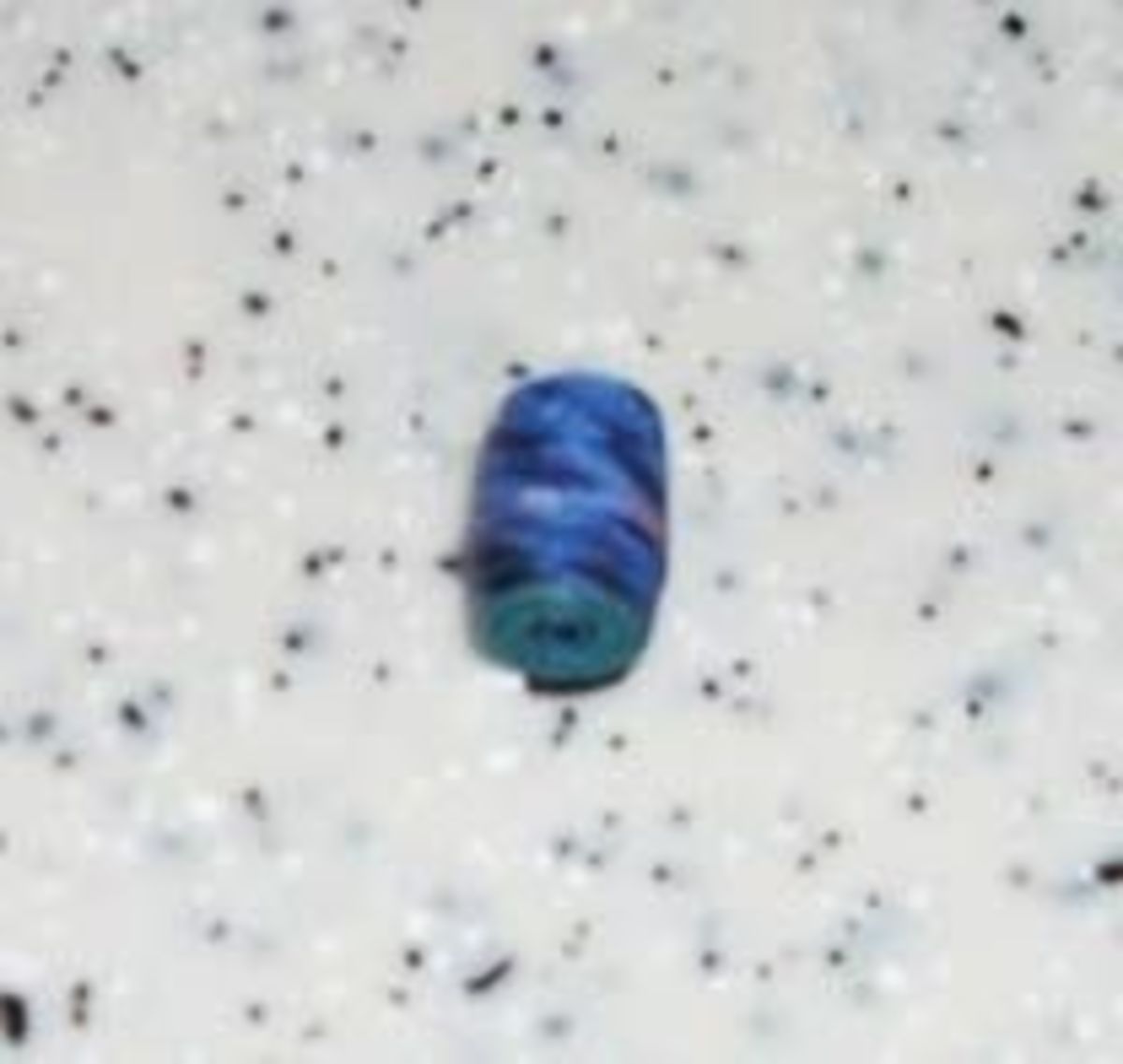
Your bead is completed; set it aside and make six more.
In a well-ventilated area, spray the beads with spray lacquer, applying several coats to make the beads water resistant. This step is necessary, otherwise the sweat or skin oils from the person who wears the finished bracelet will damage it, not to mention what will happen if that person washes his or her hands with the bracelet on. Allow the beads to dry completely between layers of lacquer and spray only one side at a time to avoid them sticking fast to your work surface protection.
Making the beads will give you a feel for working with the glue and magazine paper so you’ll be ready to make the charms.

Making the Charms
Cut seven strips .75 inch across from the thickest, glossiest pages of your old magazine running the whole length of the page. Don't worry about what patterns, words, or colors are showing, this will not affect the appearance of your finished magazine charm bracelet. These strips will only form sturdy bases for the charms.
Fold the first three quarters inch strip about three eighths of an inch and apply a very thin layer of glue. Fold and glue the strip over and over until it is all folded and glued into a little packet like the one pictured below. Repeat with the remaining six strips.
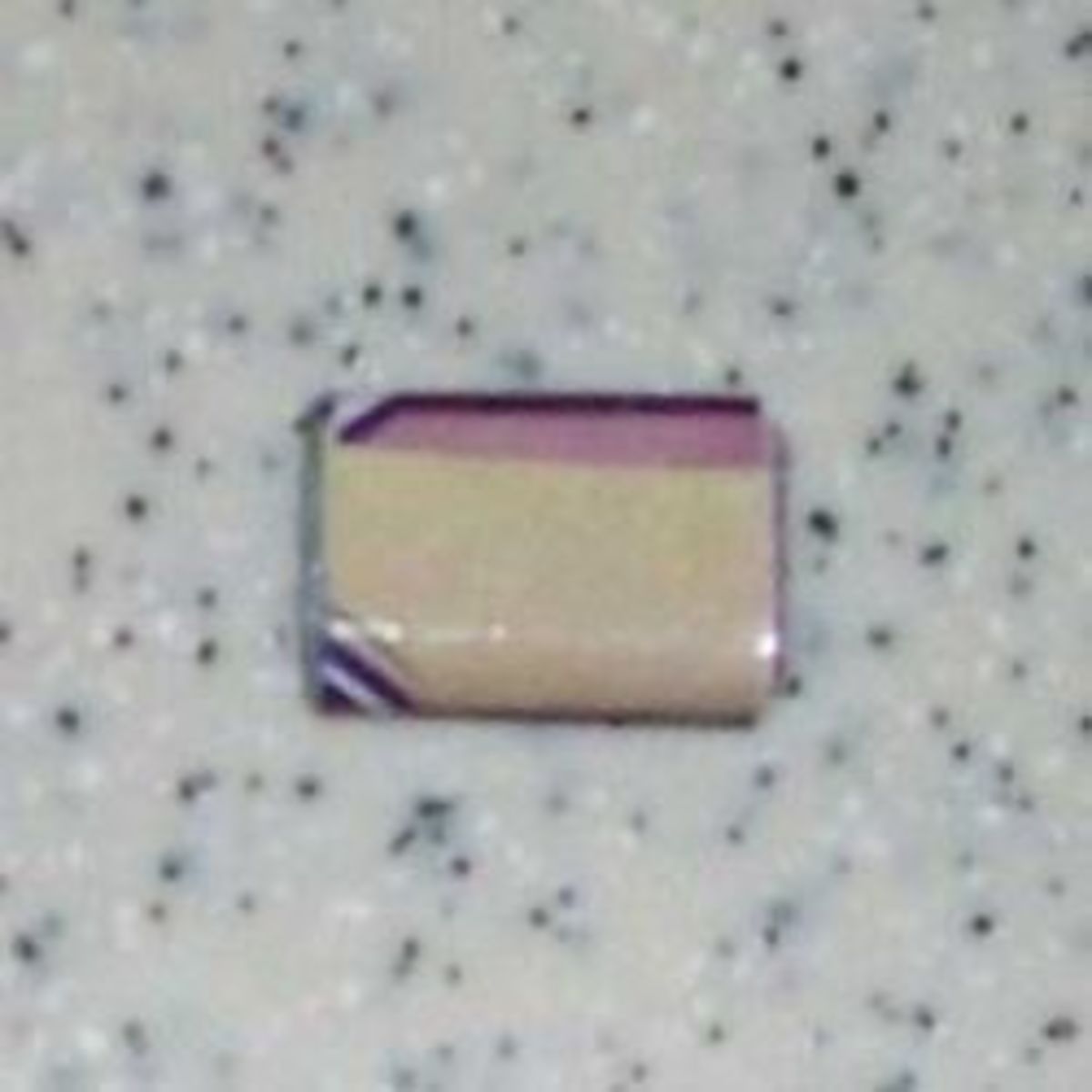
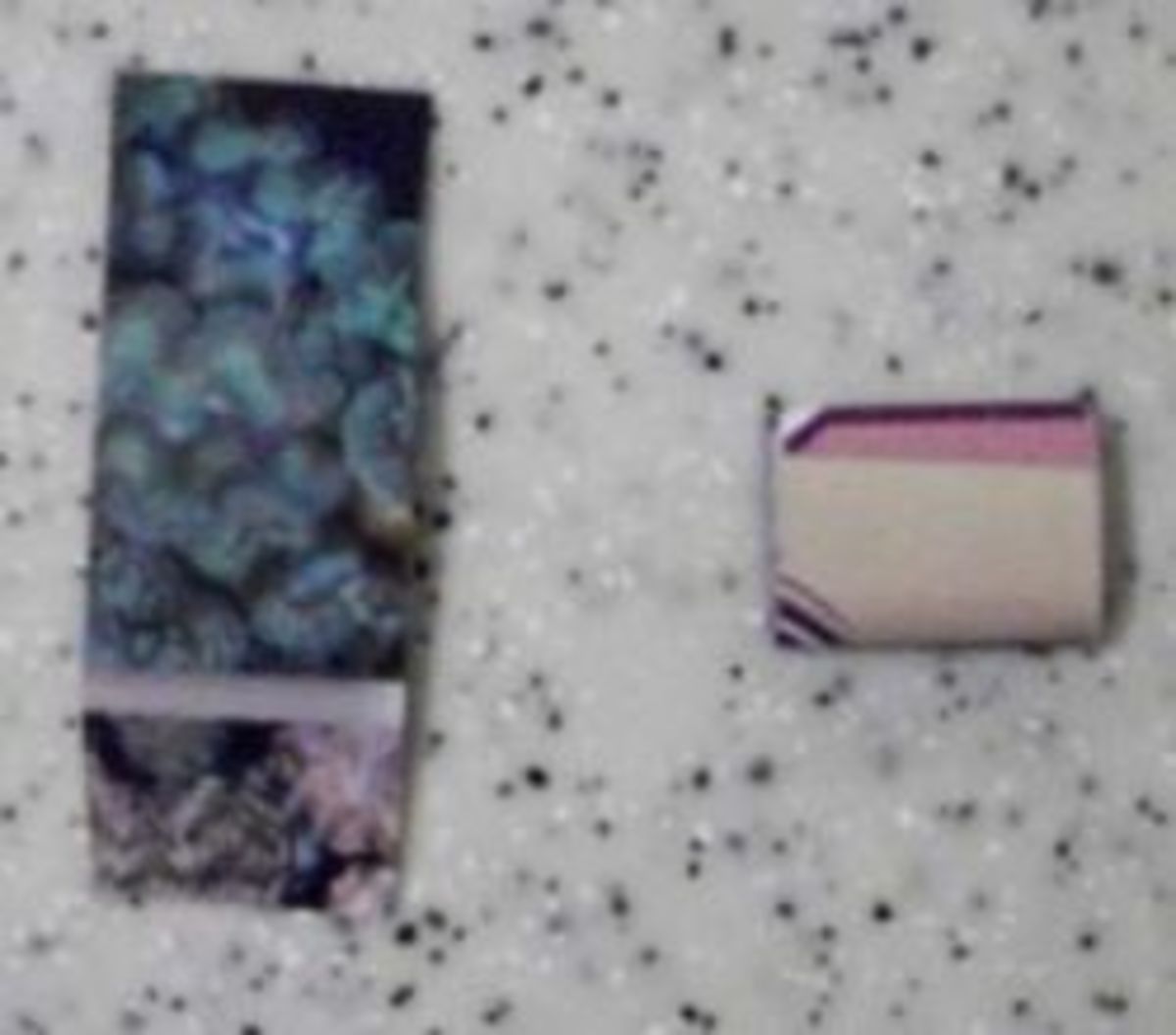
Find interesting patterns, textures or text in your old magazine to serve as the background for whatever tiny images you have chosen for the charms. Cut the paper three quarters of an inch wide and at least one and a half inches long.
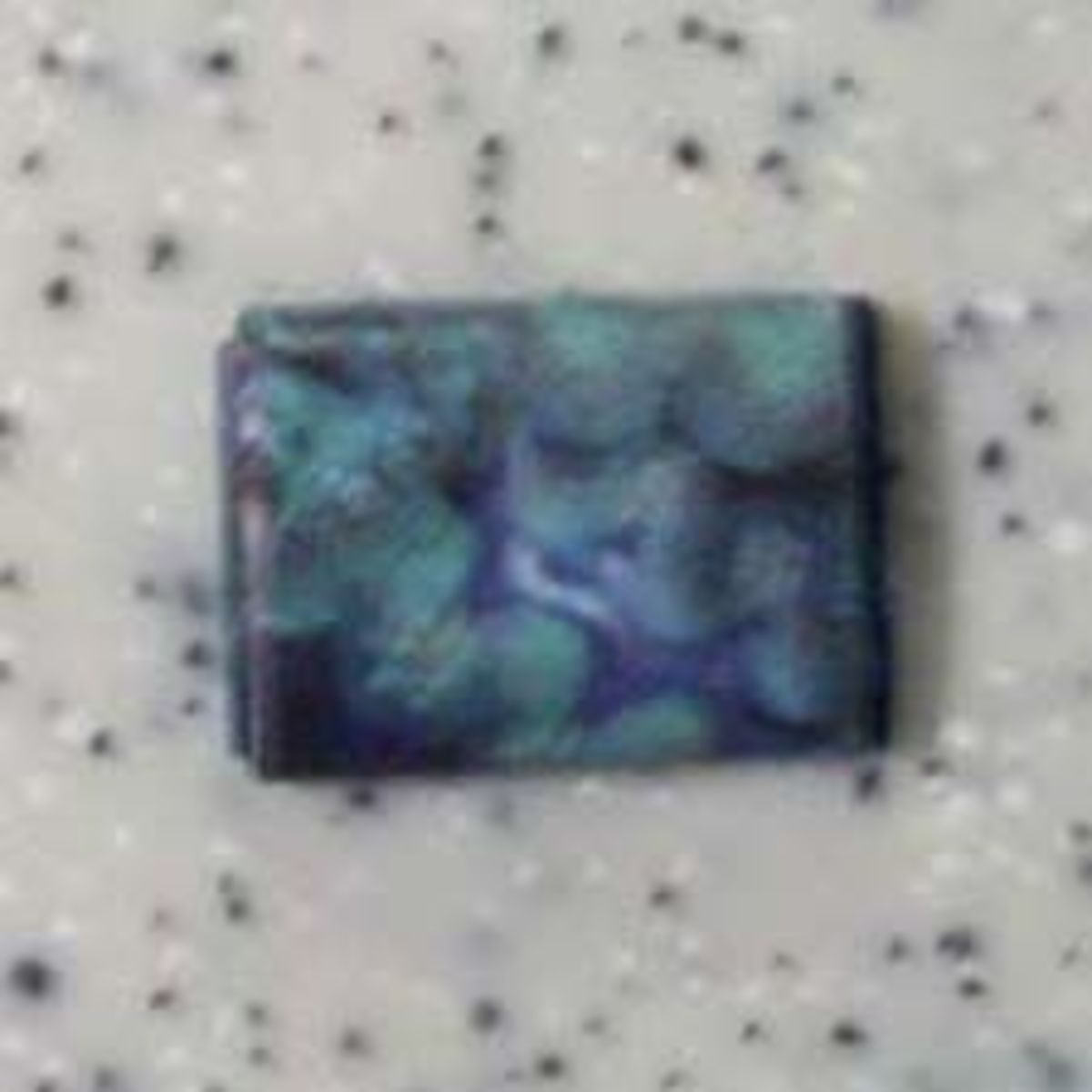
Very lightly apply glue to the back side of the background paper and wrap it around the charm base, going in the same direction you folded the charm base. Carefully smooth the paper as you apply it to the charm base.
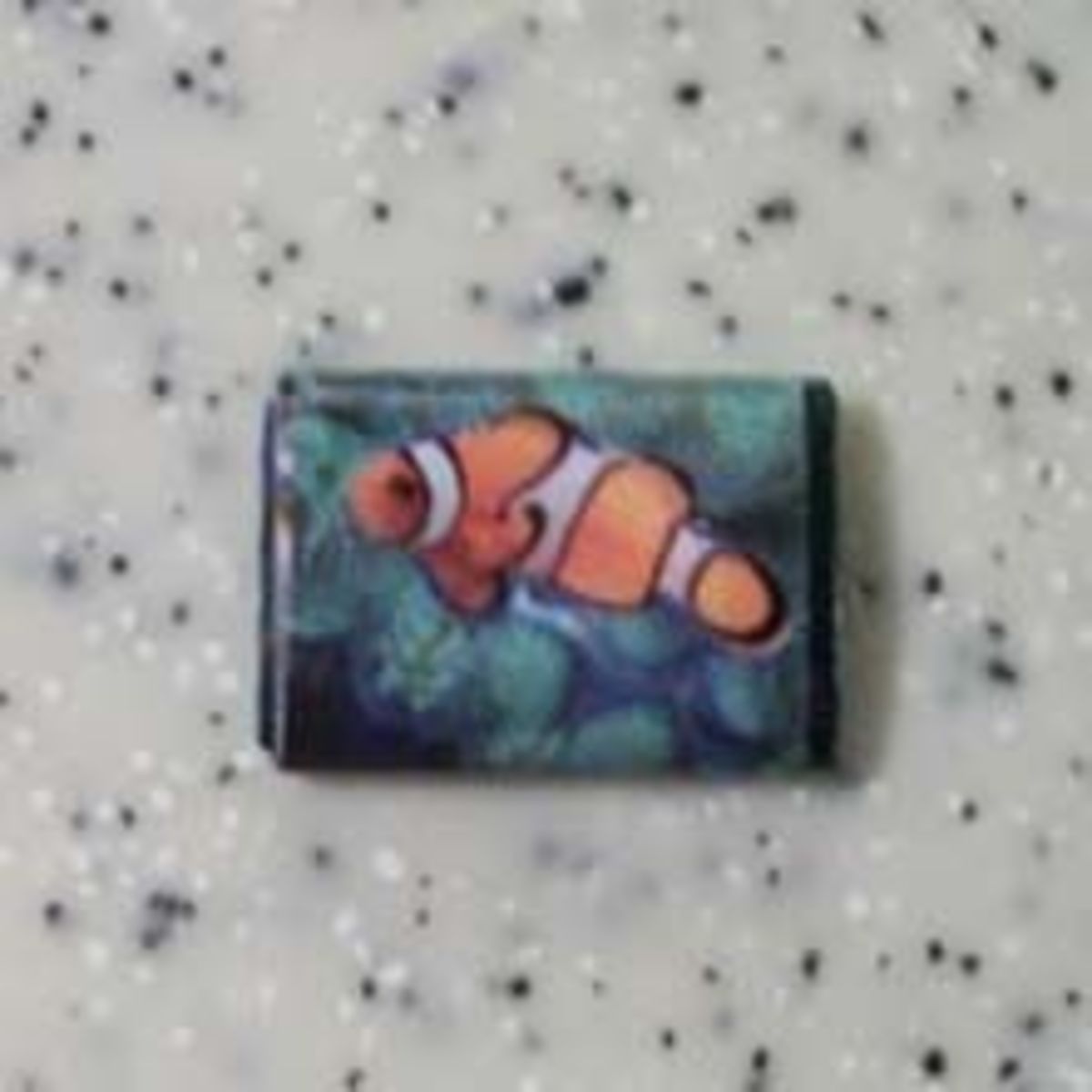
Lightly apply glue to the back of the tiny image you have chosen to put on this particular charm and place it on the charm base where you want it to be on the finished charm. Set the charm aside and make six more.
In a well-ventilated area, spray the charms with several coats of spray lacquer or spray varnish on all sides to protect the charms from moisture. Be sure to allow each side of the charms to dry completely before flipping them over to lacquer their other sides. Otherwise you'll glue the beads to the work surface and rip all your careful work off the charms.
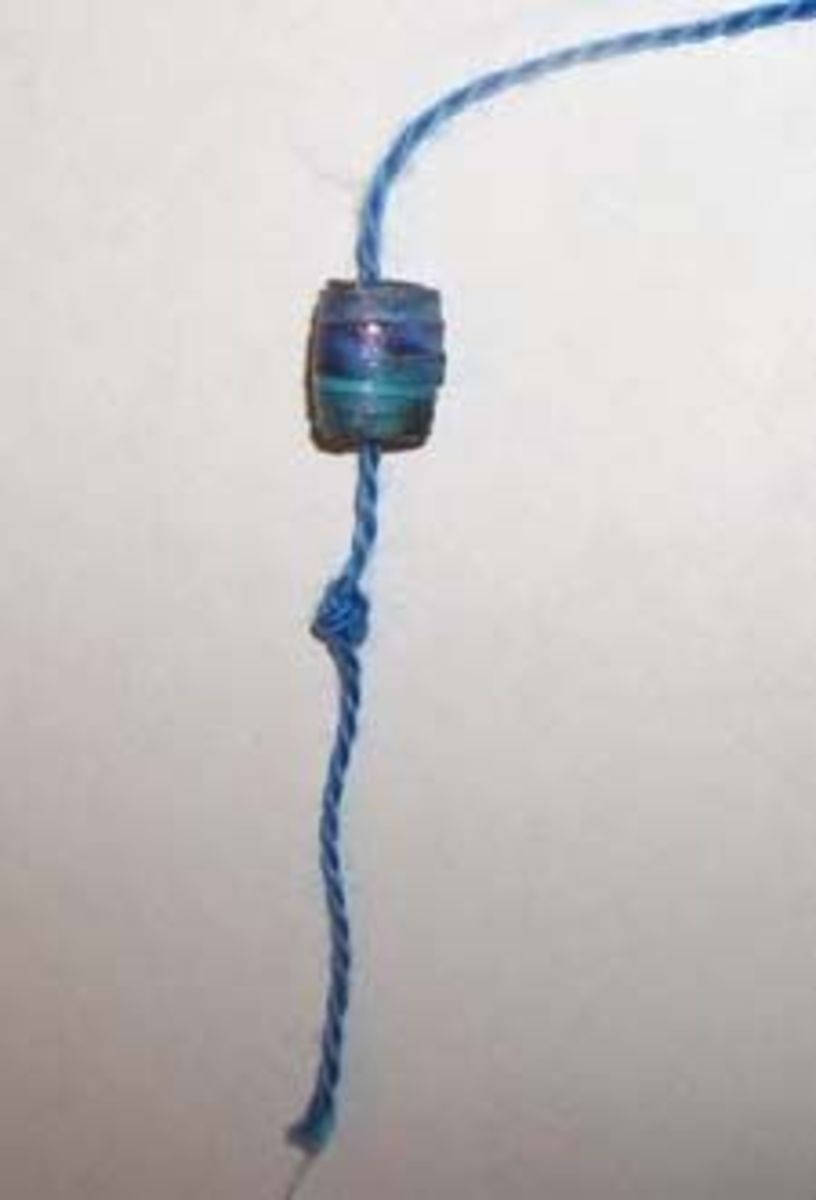
Putting the Charm Bracelet Together
Thread a largish needle with twenty four inches of embroidery thread in your choice of color. Knot it two inches from the end with a tight triple knot.
Pull the needle through the bead anchoring the bead on the end of the thread, where the knot is.
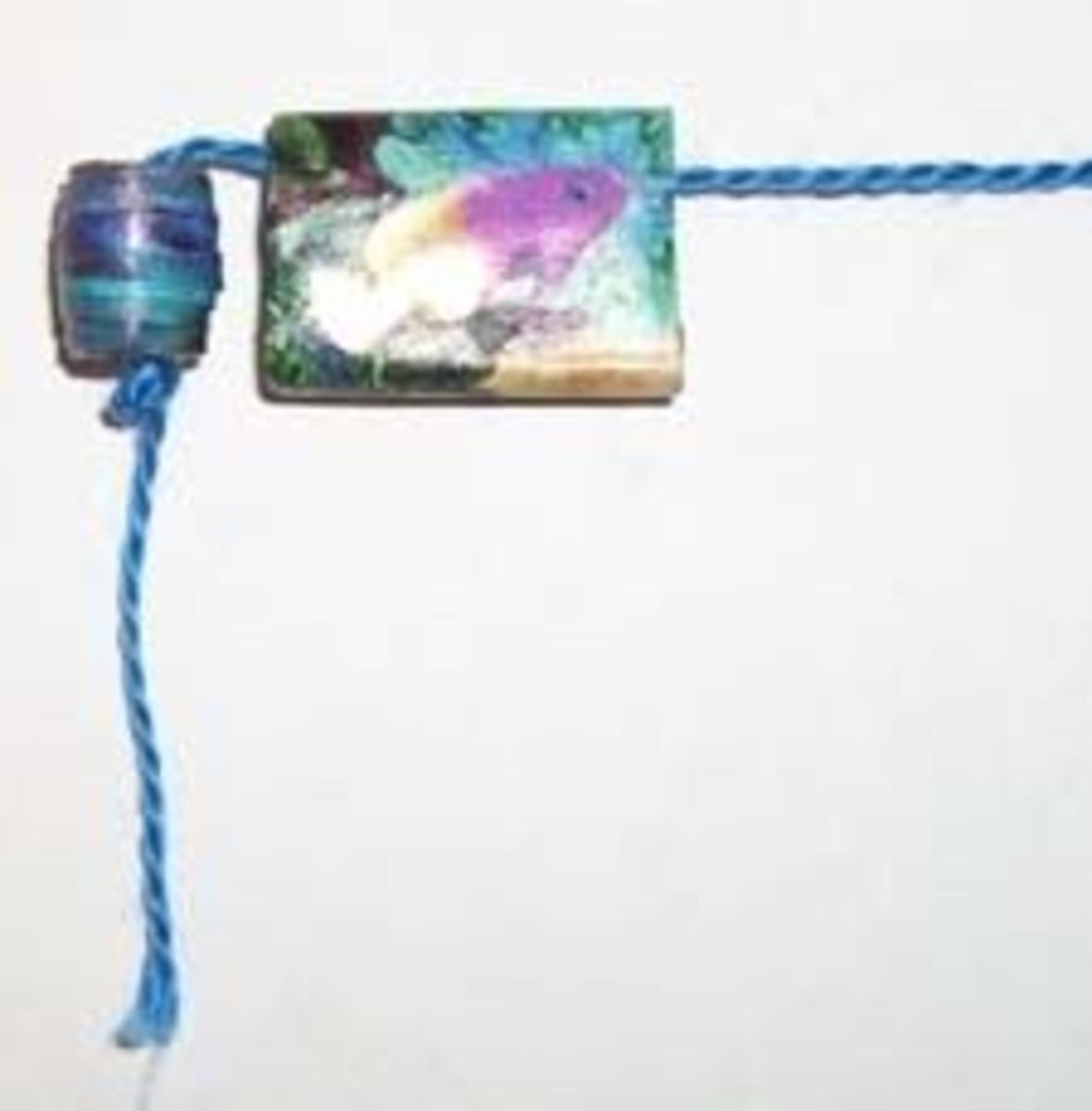
Push the needle through the top edge of the first charm. If you experience resistance, push it through slowly, twisting as you go.
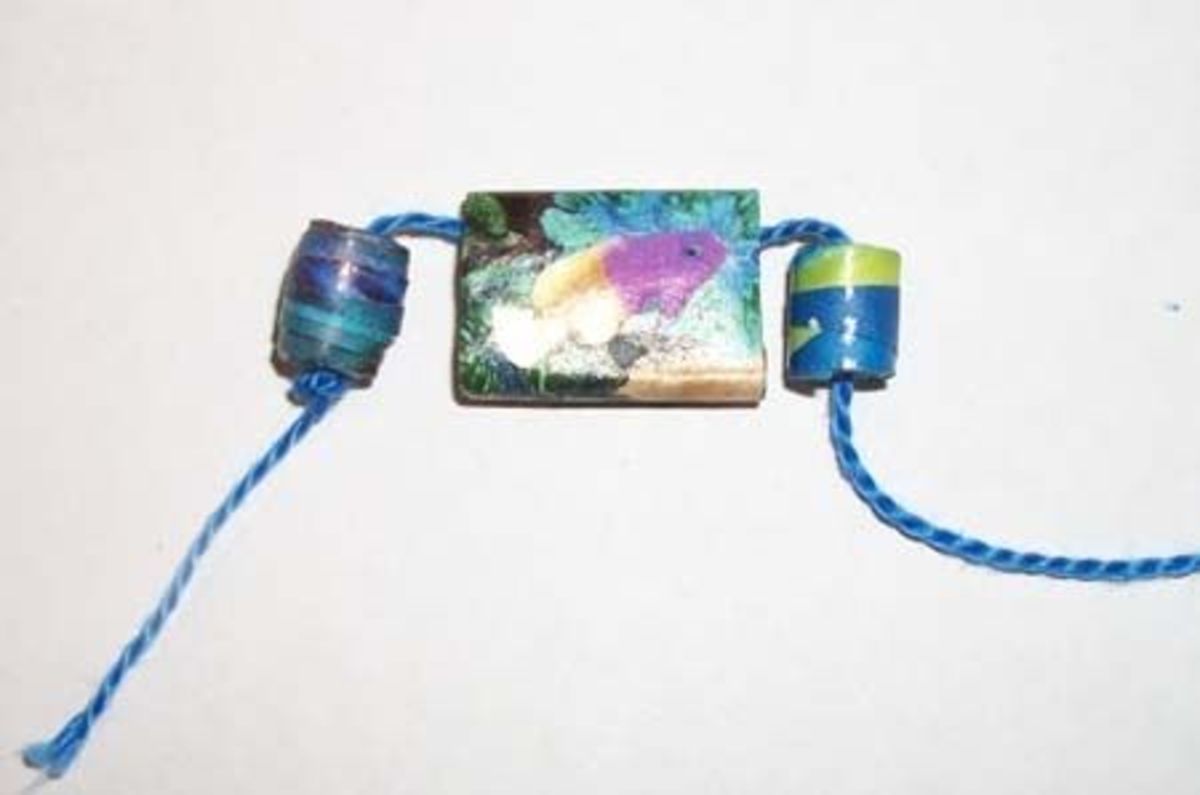
Thread the next bead from the top as shown. Next, push the needle through the bottom edge of the next charm, twisting slowly if you experience resistance.
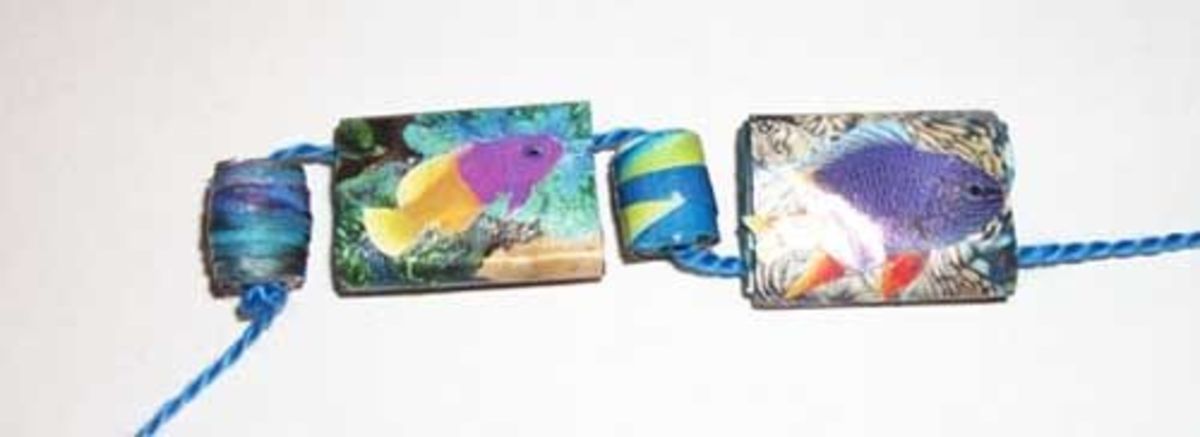
Thread the next bead from the top as shown. Next, push the needle through the bottom edge of the next charm, twisting slowly if you experience resistance.

Thread the next bead from the bottom as shown and push the needle through the top edge of the third charm. Continue on in this manner until you've threaded all of the beads and charms this way.
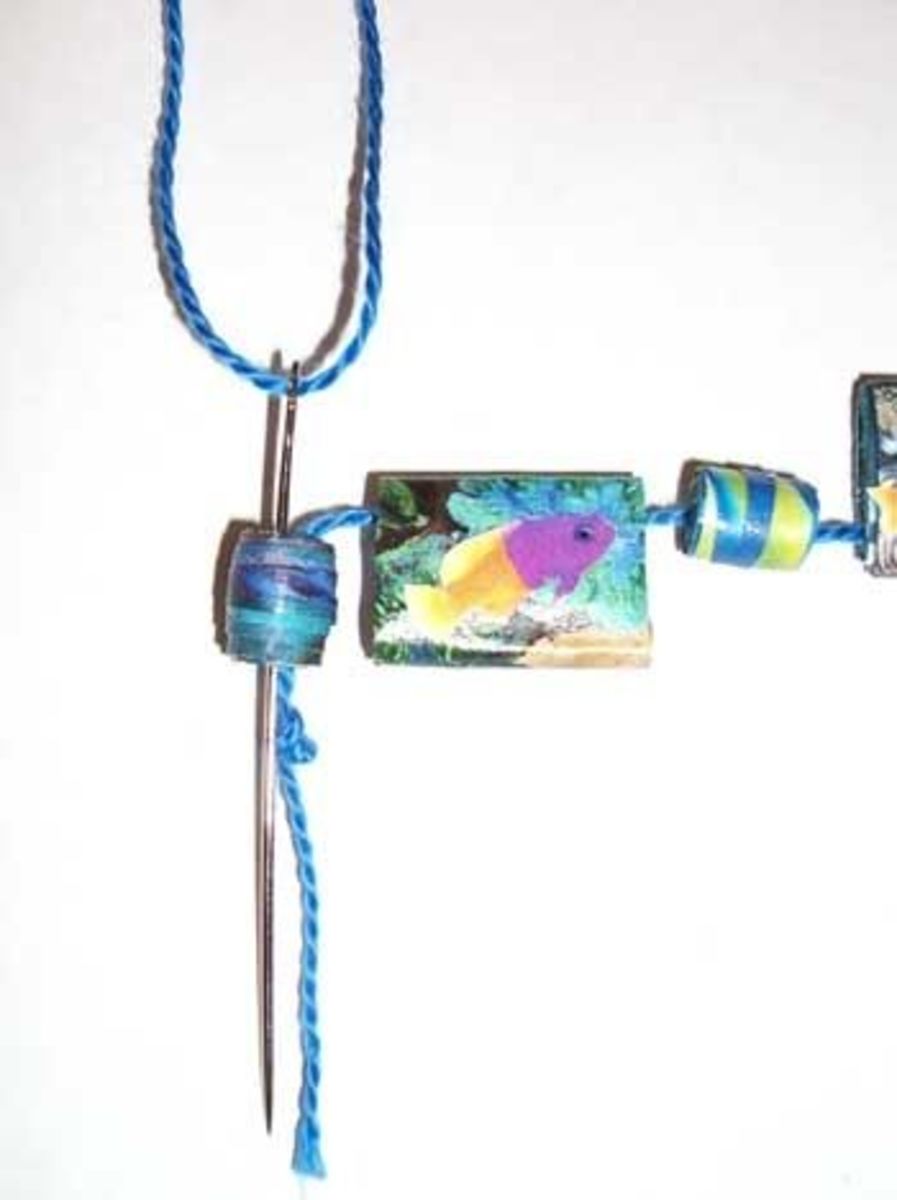
Go back to the first bead, the bead that will be the latch bead. Thread another 24” length of embroidery thread on your needle and knot it tightly with a triple knot about two inches from the end. At the beginning of the bracelet, where you put the first bead, push your threaded needle through that first bead going in from the opposite direction you started on the first pass with thread and needle.

Put your needle through the other unthreaded edge of your charm and repeat the same process you used to get from one end to the other of the bracelet except this time you are doing it in reverse, as shown.
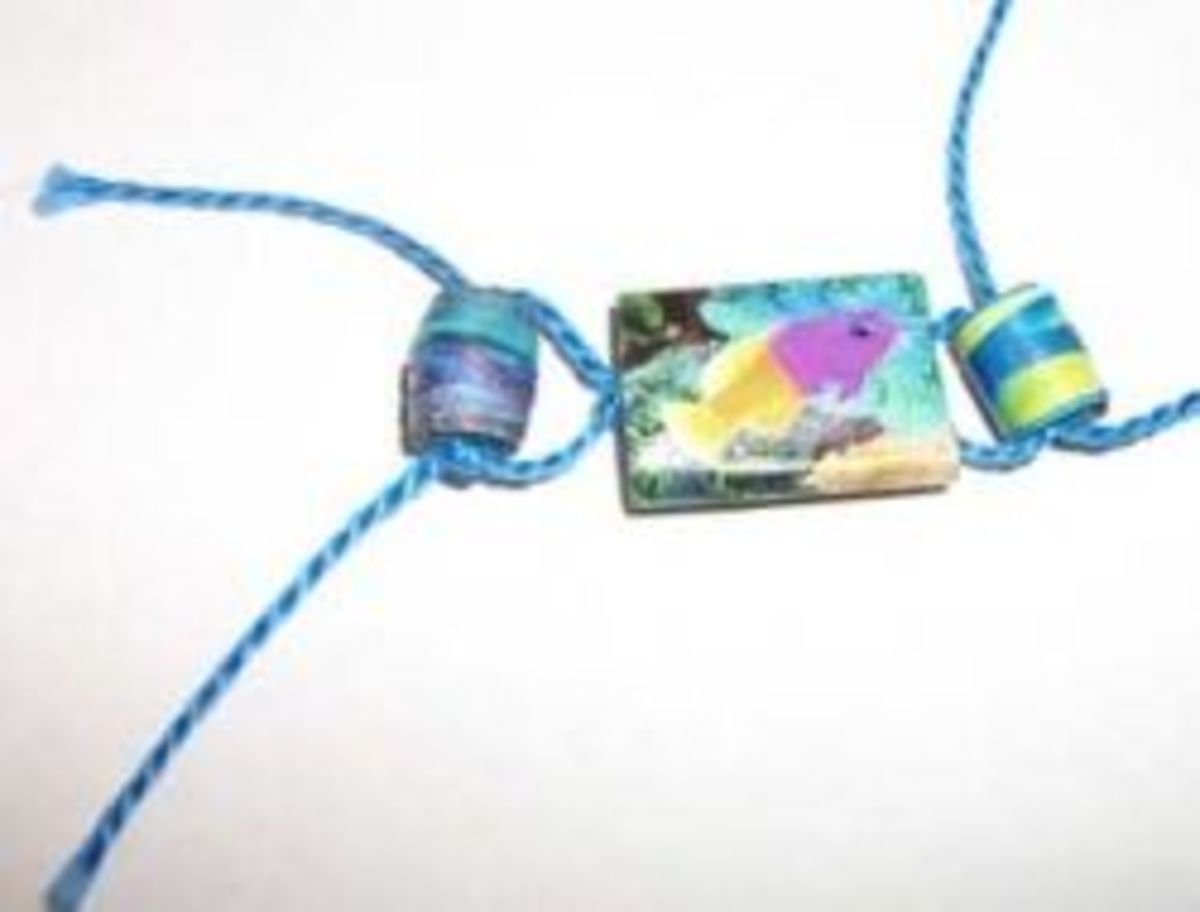

Once you've strung all of the beads and charms together you'll need to finish the latch bead and the loop it will go into to fasten the charm bracelet.
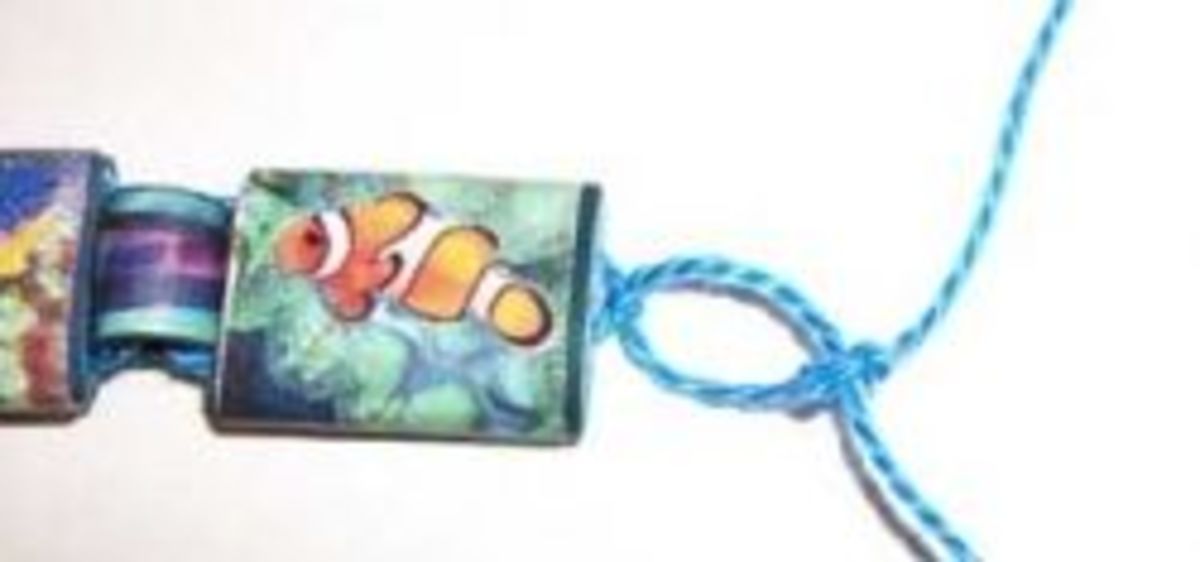
Tie the two ends of thread together right after the last charm and form a loop about three eighths of an inch long by tying the threads there in a double knot.
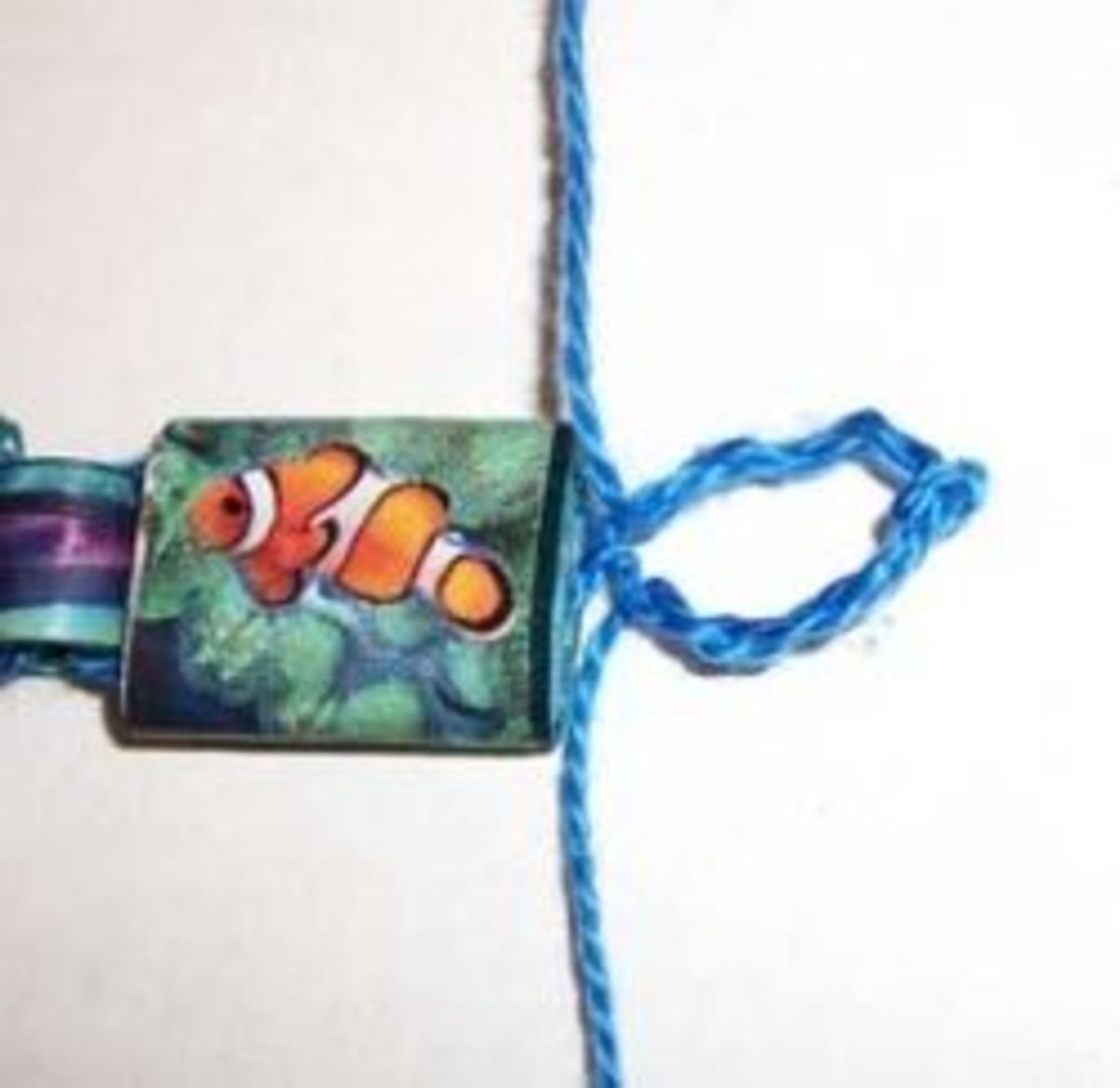
Twist the ends of the thread around the thread of the loop as shown to make it thicker and stronger.
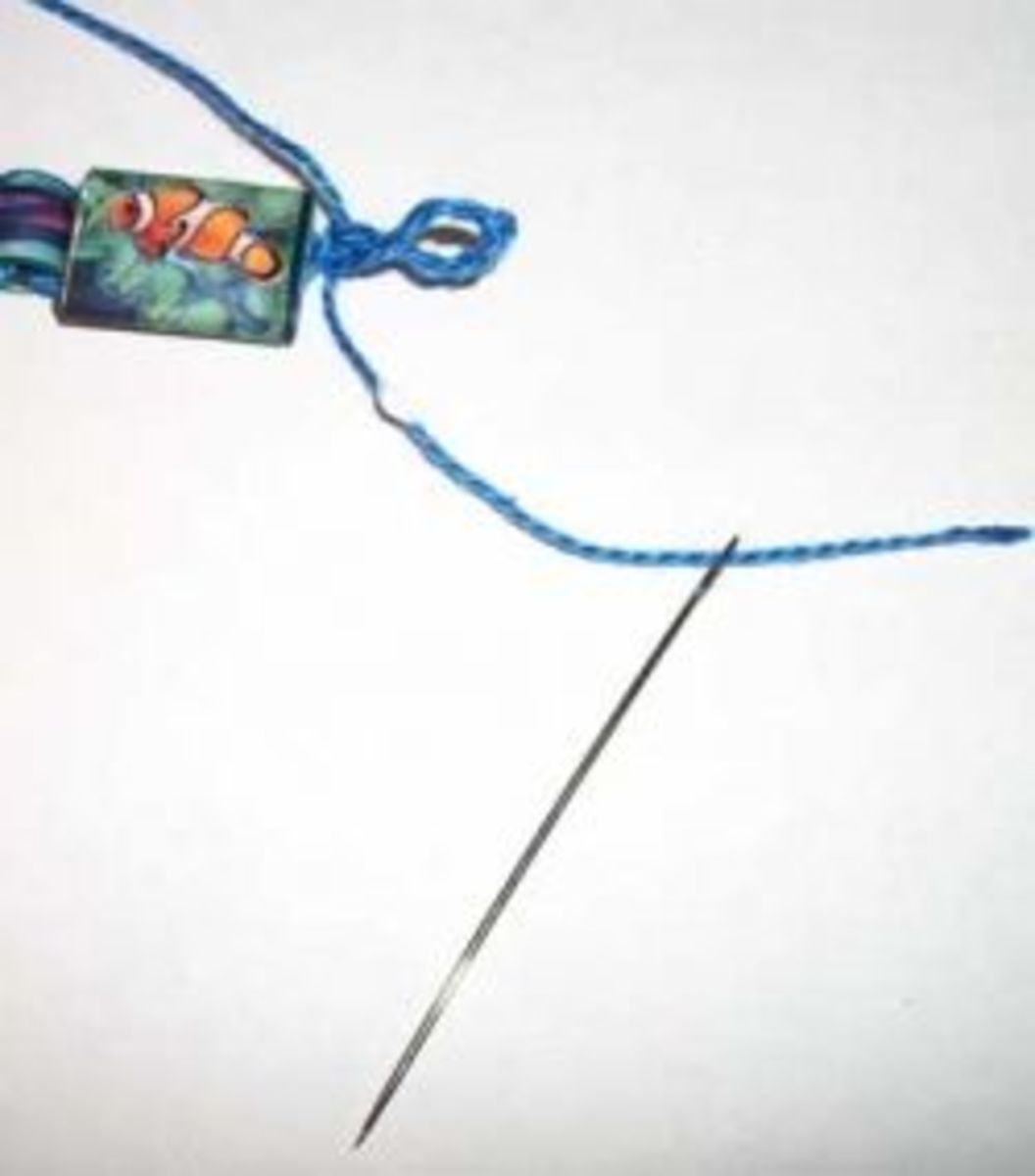
Re-thread the needle with one of the remaining ends and apply a dab of glue to the thread, close to the charm. Use the needle to pull the thread back through the charm to anchor it. Cut off any excess thread that pokes through the other side. Repeat the process with the remaining thread end.
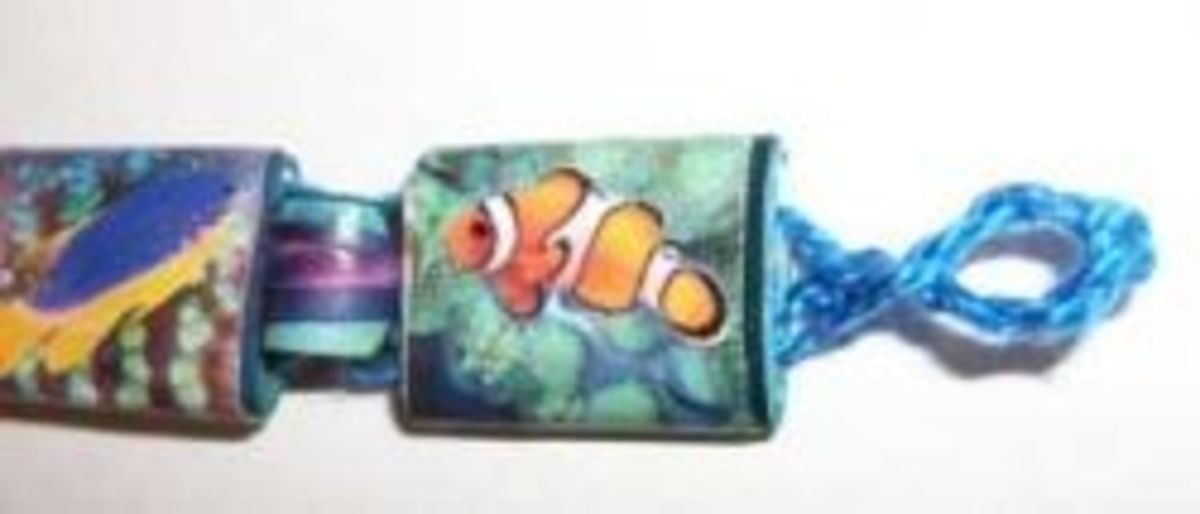
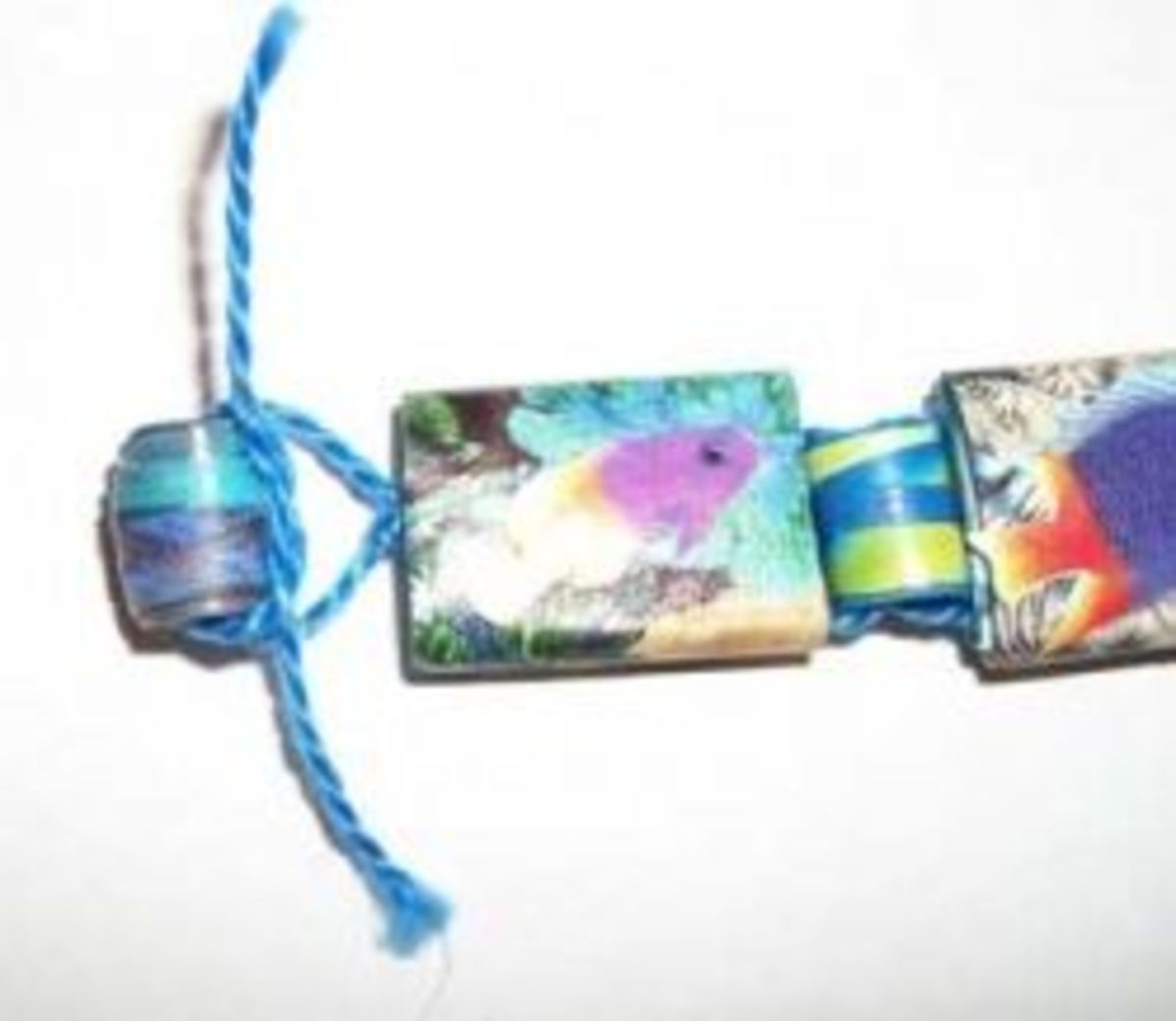
Return to the bead end and tie the thread ends off as shown, tying them around the threads between the first bead and the first charm. If any thread is still sticking out, apply a tiny dab of glue and use the needle to pull or to push the thread into the first charm to help secure the latch bead.

Now your magazine charm bracelet is complete and ready to wear or give as a gift!
